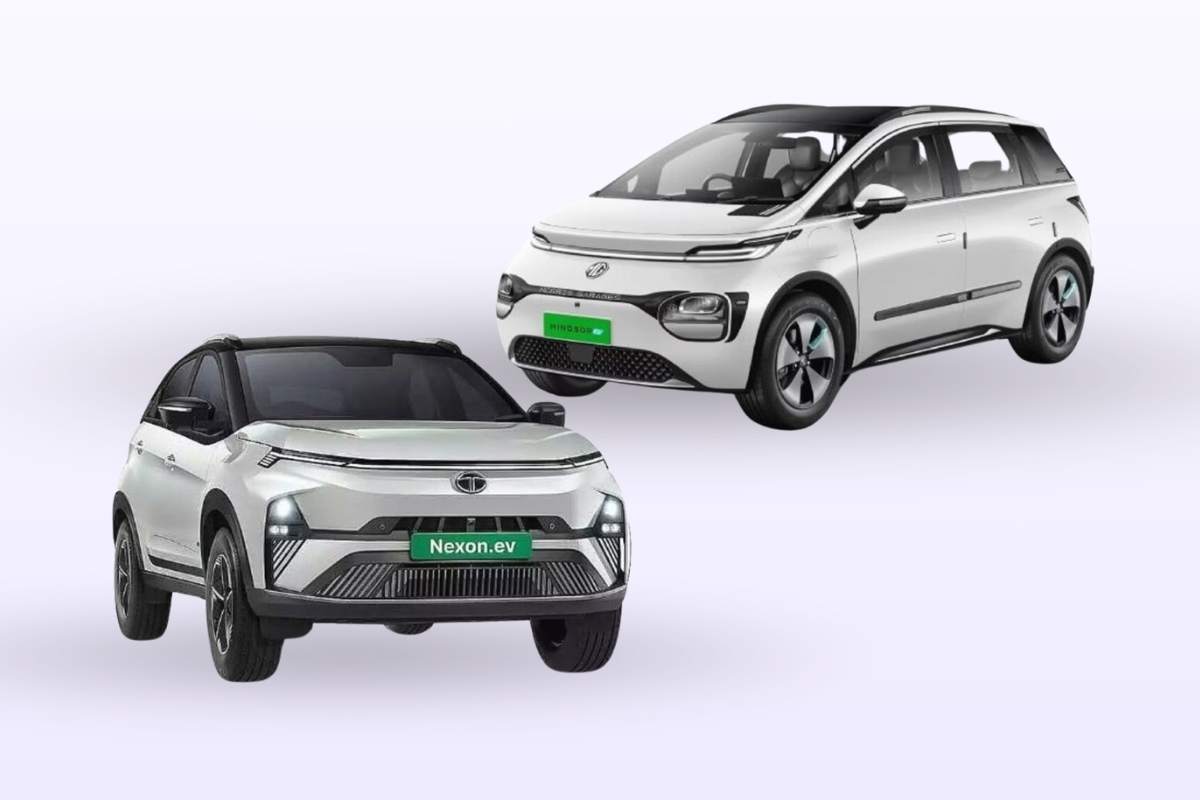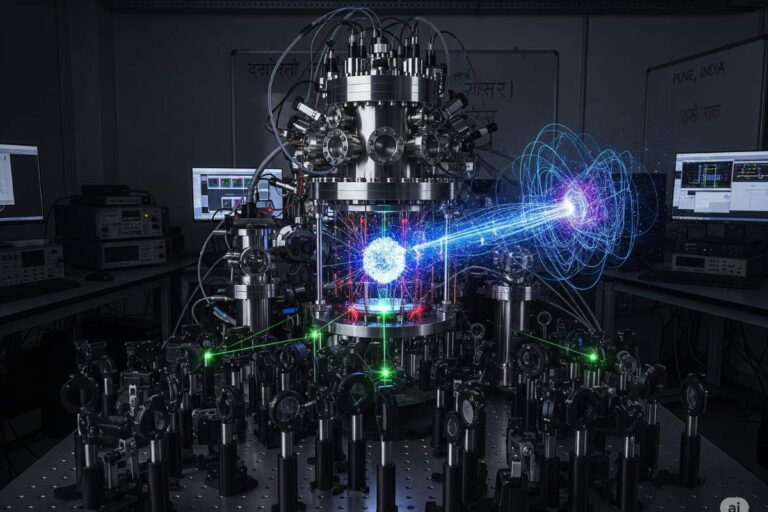The Indian electric vehicle (EV) segment is also seeing a notable rise in popularity, with a growing number of strong contenders up for grabs among consumers. In this, the MG Windsor, which was first launched in September 2024, has gained a lot of traction, even surpassing the combined sales figures of the Tata Nexon EV and Punch EV for some time. This signifies a good market response in the initial stages and reflects its ability to compete strongly. Conversely, the Tata Nexon EV has been a consistent best-seller and a trailblazer in the Indian EV market since its launch, with a strong brand presence and customer loyalty.
With the changing market, manufacturers are launching refreshed models and new variants to meet different consumer demands. In this scenario, the introduction of the MG Windsor Pro, a higher-end version emphasizing greater range and capabilities, allows for an apples-to-apples comparison with the established player, Tata Nexon EV, a highly touted electric SUV recognized for its performance and multi-variant presence. This report seeks to offer an in-depth and comparative analysis of these two major players to help prospective buyers make an informed choice in the ever-growing Indian EV market.
It should be noted that although the original question from the user did mention a comparison with the MG ZS EV, the given Zigwheels article compares the MG Windsor Pro and the Tata Nexon EV. This report will then concentrate on giving a point-by-point analysis and comparison between these two models based on the given research material to present a complete picture for prospective electric vehicle purchasers in India.
Detailed Specifications Overview
An important part of vehicle comparison is the technical specifications of the vehicles. The following is a side-by-side comparison overview of the primary specifications for the MG Windsor Pro and the Tata Nexon EV long-range, which is most applicable for comparison purposes with the Windsor Pro, considering its added features.
| Feature | MG Windsor Pro | Tata Nexon EV (Long Range) |
|---|---|---|
| Battery Capacity | 52.9 kWh | ~45-46 kWh |
| Motor Power | 134/136 bhp | 143-148 bhp |
| Motor Torque | 200 Nm | 215 Nm |
| Claimed Range | 449 km | 489 km |
| AC Charging Time | ~9.5 hours (7.4kW) | ~6.5 hours (7.2kW) |
| DC Charging Time | ~50 min (20-80%, 60kW) | ~40 min (10-100%, 60kW) |
| Length | 4295 mm | ~3994-3995 mm |
| Width | 1850 mm | 1850 mm |
| Height | 1677 mm | ~1616-1625 mm |
| Wheelbase | 2700 mm | 2498 mm |
| Boot Space | 579 litres | 350 litres |
| Ground Clearance | 186 mm | 190 mm |
When comparing these numbers, some important differences and similarities can be observed. The MG Windsor Pro has a bigger battery, with a capacity of 52.9 kWh, compared to the base Windsor EV’s 38 kWh battery. In contrast, the long-range version of the Tata Nexon EV has a battery capacity of around 45-46 kWh. The slight difference in the battery size contributes to Windsor Pro’s desire for greater range and market competitiveness.
When it comes to power output, the Tata Nexon EV has a slight edge, with an output of approximately 143-148 bhp, whereas the MG Windsor Pro produces 134-136 bhp. The torque values also trend in the same direction, with the Nexon EV producing 215 Nm against the Windsor Pro’s 200 Nm. These values indicate that the Nexon EV could provide a slightly more powerful driving experience.
The stated driving range, according to MIDC testing, is greater for the Tata Nexon EV at 489 km, and the MG Windsor Pro is rated at 449 km on a full charge. Note, however, that the actual range may differ depending on driving conditions and usage patterns, something that will be explored further later in this report.
Charging times are also an important consideration for EV buyers. The Tata Nexon EV seems to have a minor advantage in AC and DC charging. It would take around 6.5 hours to completely charge the long-range Nexon EV with a 7.2kW AC charger, while the MG Windsor Pro would take about 9.5 hours with a 7.4kW AC charger. For fast DC charging, the Nexon EV will take between 10% and 100% charge time of approximately 40 minutes when using a 60kW charger, and the Windsor Pro will take some 50 minutes to fill the battery from 20% to 80% with a 60kW DC charger.
When it comes to dimensions, the MG Windsor Pro is surprisingly larger than the Tata Nexon EV in just about every direction. It is longer (4295 mm vs. ~3994-3995 mm) and significantly longer in its wheelbase (2700 mm vs. 2498 mm). The Windsor Pro is wider (1850 mm vs. ~1802-1811 mm) and taller (1677 mm vs. ~1616-1625 mm) than the Nexon EV as well. It has direct sizing implications for the room inside and street presence.
The boot space is also another feature where the MG Windsor Pro has a big edge, with a capacity of 579 litres compared to the Tata Nexon EV’s 350 litres. This will make the Windsor Pro a practical option for customers who need a lot of luggage space. Ground clearance is similar across the two models, with the Nexon EV coming in with a higher clearance of 190 mm to the Windsor Pro’s 186 mm.
It should be noted that some minor differences have occurred in the dimensions and boot capacity of the MG Windsor Pro in various sources. For example, the width has been stated to be both 1850 mm and 2126 mm, the latter probably taking into account the outside rearview mirrors. Likewise, the boot capacity has been stated to be both 579 and 604 litres.
The statistics given here in the table are derived on the basis of the most accurate and latest details available, mainly from the formal launch announcements. In addition, the Tata Nexon EV comes in various battery pack sizes, such as a medium-range model with a smaller battery (approximately 30 kWh) and a lower price tag. For the sake of comparison, the emphasis is still on the long-range model to match the improved capabilities of the MG Windsor Pro.
Feature Comparison
Apart from the fundamental specifications, the amenities provided by every vehicle are also very important in the overall ownership experience. Both the MG Windsor Pro and the Tata Nexon EV feature a set of contemporary features in different categories.
Exterior: The MG Windsor Pro stands out with new 18-inch dual-tone alloy wheels, presenting it with a new look over the standard Windsor EV. It has full LED illumination, including daytime running lights (DRLs) on the headlights and taillights. One design feature is the presence of flush door handles, which adds to a streamlined look. For convenience, the Windsor Pro has a powered tailgate. A “ADAS” badge on the tailgate indicates the presence of advanced driver-assistance systems. Customers also get to choose from three new colors for the exterior: Celadon Blue, Aurora Silver, and Glaze Red.
The Tata Nexon EV also boasts LED headlights with DRL and LED taillamps. The top trims come with 16-inch alloy wheels. The connected LED DRL feature at the front is a unique design feature. The panoramic sunroof is a highlight of the Nexon EV from the outside, providing an open-air driving experience.
Interior: Within the MG Windsor Pro, the interior is dominated by a large 15.6-inch touchscreen infotainment system, supported by an 8.8-inch digital driver’s display. Wireless Android Auto and Apple CarPlay are also standard features, combined with a 9-speaker Infinity sound system and wireless phone charging. The interior has a fixed panoramic glass roof and also includes distinctive 135-degree reclining rear seats, providing greater passenger comfort. The driver is treated to a 6-way electrically adjustable seat. A new dual-tone ivory interior theme creates a lighter and airier atmosphere.
The Tata Nexon EV has a slightly smaller but still high 12.3-inch touchscreen infotainment system and a larger 10.25-inch digital driver’s display. It also boasts wireless Android Auto and Apple CarPlay, a 9-speaker JBL sound system, and a wireless phone charger. Unlike the Windsor Pro’s fixed glass roof, the Nexon EV features an operable panoramic sunroof. Both front seats are ventilated for added comfort, and rear passengers benefit from dedicated AC vents. The Nexon EV also offers voice command functionality.
Safety: The MG Windsor Pro is loaded with an advanced Level 2 ADAS suite, comprising functions such as Traffic Jam Assist, Forward Collision Warning, Adaptive Cruise Control, Lane Departure Warning, Lane Departure Prevention, Automatic Emergency Braking, Bend Cruise Assistance, and Intelligent Hydraulic Braking Assistance. It gets standard safety equipment such as 6 airbags, Electronic Stability Control (ESC), hill start and descent assist, Tyre Pressure Monitoring System (TPMS), and a 360-degree camera.
The Tata Nexon EV also keeps safety at the forefront with 6 airbags as a standard fitment across all its variants. It features ESC, hill assist, and descent control, TPMS, a rear parking camera, and a 360-degree camera. The Nexon EV also gets an electronic parking brake with auto hold. One major safety feature of the Nexon EV is its 5-star safety rating by Global NCAP, which gives a strong endorsement of its build quality.
Technology & Convenience: MG Windsor Pro has features of advanced technology like Vehicle-to-Load (V2L) and Vehicle-to-Vehicle (V2V) capabilities, enabling it to charge external devices or even charge other EVs. It also comes with a digital key for greater convenience and MG’s i-Smart connected car technology. The powered tailgate also adds to the convenience.
The Tata Nexon EV features Vehicle-to-Load (V2L) charging and a connected car. Multiple voice assistants are cited in some sources for more convenience. Although some information indicates V2L capability in the Nexon EV, V2V functionality is less widely reported.
Overall, the MG Windsor Pro has a more comprehensive ADAS suite and the practical bonus of V2L and V2V technology. The Tata Nexon EV may be without ADAS, but it has a guaranteed 5-star rating and a functional panoramic sunroof. Both cars are feature-rich with contemporary infotainment and connectivity options, signaling a competitive product in this class.
Pricing and Variant Analysis
Grasping the price and variant build is important to prospective buyers. The MG Windsor Pro is introduced as an all-new flagship variant, the next one over the current Excite, Exclusive, and Essence trims. The launch price of the initial ex-showroom price for the Essence Pro version is Rs 17.49 lakh, only for the initial 8,000 buyers. One of the key features of MG’s approach is the offer of a Battery-as-a-Service (BaaS) solution for the Windsor Pro, with customers able to buy the vehicle without the battery at an initial ex-showroom price of Rs 12.49 lakh and pay a rental of Rs 4.5 per kilometer for the battery. The regular MG Windsor EV (Excite, Exclusive, Essence) retails at Rs 14 lakh to Rs 17.50 lakh (ex-showroom), with BaaS versions also on offer starting from a lower price.
The Tata Nexon EV in its long-range version (with the ~45 kWh battery) comes in several variants with ex-showroom prices from Rs 13.99 lakh to Rs 17.19 lakh. These variants are Creative, Fearless, Empowered, and Empowered Plus, with varying levels of features and equipment. Tata Motors also retails the Nexon EV in medium-range variants (30 kWh battery) from an ex-showroom price of Rs 12.49 lakh, addressing customers with varying range needs and budgets.
Performance and Driving Experience
The Tata Nexon EV seems to provide a marginally more powerful performance than the MG Windsor Pro, at least on paper. The Nexon EV’s superior power (143-148 bhp) and torque (215 Nm) numbers indicate a more spirited driving experience, which is also corroborated by auto news websites. For example, the Nexon EV has a 0-100 kmph acceleration time of approximately 8.9 to 9.9 seconds. Specific acceleration values for the MG Windsor Pro could not be easily found in the given material. However, the sportier and improved power output of the Nexon EV has been emphasized in comparison reviews. Both cars are based on a front-wheel-drive system, typical of this category. Though specifications give a broad idea of performance, in-depth driving reviews, particularly for the MG Windsor Pro, would give a better idea of its actual driving dynamics in real life and how it fares against the Tata Nexon EV.
Practicality and Comfort Evaluation
The MG Windsor Pro is the more practical one in terms of interior space and comfort, mostly because of its bigger size and longer wheelbase. Its much bigger boot space of 579 litres over Nexon EV’s 350 litres also positions the Windsor Pro as more ideal for families and individuals with big luggage needs. The availability of 135-degree reclining rear seats in the Windsor Pro adds to passenger comfort, particularly during long trips, which is much appreciated by owners. Its MPV-like look focuses on passenger comfort and interior space. In contrast, the slightly smaller Tata Nexon EV’s dimensions present an advantage within urban conditions due to easier mobility in city traffic and easier parking within tight conditions. Note that earlier models of the Nexon EV had a raised rear floorpan, which may continue to influence middle rear passenger comfort within newer releases.
Real-World Range and Charging Infrastructure
The Tata Nexon EV has a slightly higher claimed range of 489 km than the MG Windsor Pro’s 449 km. Real-world range tests, however, paint a more detailed picture. For the base MG Windsor EV (with a 38 kWh battery), tested real-world ranges have been approximately 250-310 km. Based on the bigger 52.9 kWh battery on the Pro version, an even real-world range of the Nexon EV’s 330-370 km (for the 45 kWh version) can be anticipated.
The real-world ranges of 308 km for the base Windsor EV and 350 km for the Nexon EV 45 kWh were demonstrated during testing by Autocar India. Both cars are equipped with DC fast charging via the CCS-II standard, which is common in India. Charging times are similar, though the Nexon EV may provide slightly faster AC and DC charging in certain situations. Eventually, the actual range both vehicles will deliver will be influenced by several factors, including driving style, traffic, and the use of features such as air conditioning.
Competitive Positioning
In the more competitive Indian EV market, the MG Windsor Pro and the Tata Nexon EV hold slightly different positions. The Windsor Pro, with its focus on interior room, comfort, and a full ADAS suite, combined with the exclusive BaaS proposition, is a family-focused EV with a premium feature focus.
Its early sales success suggests a good market reception to its value proposition.
The Tata Nexon EV, on the other hand, is a well-established sub-4m electric SUV renowned for its performance, value (more so in the lower variants), and an assured 5-star safety rating. It competes aggressively on pricing and has a broader variant lineup to suit various customer requirements. Both models compete with other EVs available in the market, including the Hyundai Creta Electric, Mahindra XUV400 EV, and Tata Curvv EV, emphasizing the dynamic nature of this segment.
Conclusion
The decision between the MG Windsor Pro and the Tata Nexon EV finally depends on personal priorities and preferences. The MG Windsor Pro offers an attractive alternative for customers who value interior room, comfort, and sophisticated safety features such as Level 2 ADAS. Its bigger boot capacity and reclining rear seats make it especially family-friendly. The Battery-as-a-Service model also provides a distinctive ownership proposition with reduced up-front cost. Prospective buyers need to carefully consider their long-term mileage needs to determine the overall cost-effectiveness of the BaaS model.
On the other hand, the Tata Nexon EV is distinguished by its slightly better performance, an assured 5-star safety rating, and greater choice of variants to suit various budgets and range needs. Its smaller size makes it an appropriate choice for city driving. Customers who value performance and a reliable safety record may prefer the Nexon EV.
Considering the ever-changing nature of the EV market, it is strongly advised that prospective buyers take into account their individual needs, budget, and driving habits. Test driving both cars will give them a good idea of their actual performance, comfort, and features in real-world conditions. The best choice will ultimately be the one that most closely matches individual priorities and lifestyle.























Tata is better